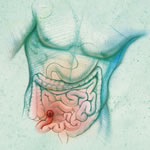
As Ian and Patrick have already indicated, my surgery went very well on Tuesday. I want to thank them for doing the guest blog, making sure readers were informed quickly of the results. They did a great job. I'm a proud Dad!
I've seen my surgeon twice since surgery. He seems pleased with my progress. Actually so do I. I am definitely very sore, especially along the long incision line. Getting in and out of bed is one of the most painful things I've ever done. But everything else is working out well. I've got my notebook computer, my Pocket PC, a TV, a telephone and headphones to make sure the fellow patients in the surgical ward aren't disturbed. I've made some friends in the ward already, one of whom has invited my family to visit him in Listowel on his farm for lunch in the summer when we've both recovered sufficiently.
The nursing staff has been fantastic. They keep pushing me to practice deep breathing with the inspirometer (I think I've finally got that mastered now), to get out of bed and take tediously slow walks pushing the pole with my IV drip, medications, and Foley bag. Yesterday, I made three loops of the surgery ward hall, today four.
Our parish nurse is a nursing teacher at Conestoga College. She was able to get two student nurses for me on Tuesday and Wednesday. One nurse is using my story for a case study, and the other was able to witness the anterior resection surgery directly in the operating room with me. They both lavished me with attention. Getting to know them was a privilege and a blessing.
It is difficult sleeping and keeping comfortable at night. When you have no abdominal muscles left, it's amazing how little you can do to adjust. The ward is also noisy. But the patient controlled analgesia means that I can administer pain killers and get to sleep for an hour or two at a time in the night. Most patients here seem to have the same problem with sleeping, but my incision is, I think, the most painful right now.
A couple good things happened. No drain from the incision and no nasogastric tube. I've also had an incredible outpouring of well wishes from friends, family and colleagues. Today, I had visits from my immediate family, my mother and father and uncle, and the birth maternal grandparents of our sons.
There has been some kick starting of the digestive system already, mainly in the stomach and small intestines, but not even a hint yet of passing gas. As soon as that happens, we'll start reintroducing fluids and then low-residue foods. But core recovery is going to take a very long time. I can't do anything with my abdominal muscles at all except grimace in pain.
It will take time even to respond to all my well wishers. Writing is not easy right now, so I may simply back off for a while yet. This post is simply to tell you all that I've made it through surgery and have good reason to feel quite optimistic.
Powered By Qumana

















